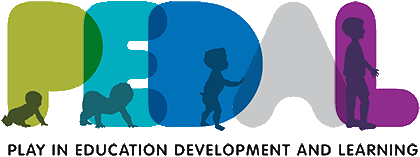This blog was originally written for the Institute of Health Visiting as part of Children’s Mental Health Week. You can check out more of their Voices blog articles on their website here.
In the early stages of COVID-19 pandemic response, many of us reckoned with duelling desires to carry on with semblances of normal life while also contending with the complete abnormality of the moment, having no knowledge base of how to function under such circumstances. We questioned not only how to care for ourselves, but also the vulnerable among us, including children. Though evidence showed that children were not as high risk as adults in terms of the physical ailments of COVID-19, many rightly began to express curiosity and concern about the effects of the pandemic and related lockdown parameters on other aspects of children’s lives: educational attainment, psychological and emotional health, sociability, and their essential, unique childhood right to play.
Impact of quarantine, isolation, or restrictions on children’s play
As a PhD student at the University of Cambridge’s Centre for Research on Play in Education, Development and Learning (PEDAL), my research focuses on the intersection of play and children’s health, particularly in paediatric hospitals. The pandemic presented a new and unexpected type of health adversity, and that research focus shifted in response. In April 2020, the “heyday” of lockdown, we convened a small team to explore what existing research could tell us about the impact of quarantine, isolation, or restrictions on children’s play. This rapid review highlighted a gap in knowledge regarding how children’s play can be affected by restrictive circumstances, particularly in situations of widespread disease outbreaks. What was particularly striking was a lack of information stemming from children’s own voices. In light of these findings, I was motivated to explore play in the pandemic from play experts themselves: children.
Interviews
I conducted 15 virtual interviews with children (ages 3-10), asking about what it was like to play recently and whether play felt quite different or largely the same. In inviting children to take part in research that is about them, we can recognise children as experts of their own experiences, ideas, and beliefs. Young children are able to express themselves in various ways, and it is our responsibility to listen and value their insights. To be sure, doing virtual interviews with children required flexibility and open-mindedness: I spoke to children on their own or with parents present, with favourite toys or games to share with me, at kitchen tables and on bedroom floors, with siblings and pets running by, and sometimes entered moments of pure, virtual imaginative play. I am now focused on analysing the large amount of data that I gathered from these conversations and playful moments with children and families; however, my initial impressions are an integral step in that analysis, guiding a path toward a better understanding of children’s play amidst this pandemic.
Resiliency of play
What stood out to me upon early reflection was the resiliency of play. During a time when a global health crisis had utterly distorted what was considered “normal”, in so many ways play seemed to have persisted. Children described ways in which play felt quite typical: playing in gardens and treehouses, making up new games with siblings, drawing and writing stories, introducing me to beloved stuffed animals and toys. That is not to say that play seemed unaffected: children also described ways that play felt different, such as virtual birthday parties, not being able to touch or hug non-immediate family members, and games at school that had changed because of social distancing. During a video call, one child turned her bedroom into an imaginary doctor’s office with various stuffed animals needing to rest because of “germs”. She told me that I could keep my own stuffed animal safe by covering its mouth and nose, demonstrating for me by placing a “mask” in front of her own face. This type of play behaviour is clearly salient to and affected by the moment we are in, but critically, it is still playful.
Children can be experts of their experiences, especially when it comes to play. Their perceptions and insights of playing during this pandemic will not only help us to better comprehend how children perceive and understand such situations through play, but they will also allow us to gain a more enhanced appreciation of the power and resiliency of play in moments of crisis and beyond. Undeniably, typical play opportunities and experiences have been shaped by the pandemic and physical restrictions, but play itself is not on lockdown. Through play, children have the capacity to express a natural fortitude toward learning and understanding that perhaps could mitigate effects of early adversity. I hope that this work will showcase not only the infallibility of play, but also the power in children’s own perspectives that are essential to understanding our collective sense of mental health and wellbeing.
Thoughts on play for parents of pre-school children:
- No need to shy away from pandemic play. At the moment, matters such as coronavirus, social distancing, vaccines, masks, and lockdown are all around. Children perceive and absorb information surrounding them, and pandemic-related topics may be present in their play. Play is a safe, non-judgmental way for them to explore that information and generate understanding of its meaning to themselves and those around them.
- Children are play experts. Play is one of the most simple and familiar aspects of childhood. While the content or expression of play might have changed for some kids, the act of playing is still carried out by children every single day – learning and developing on their own terms. Children’s natural inclination toward play could perhaps provide a sense of normalcy among so much uncertainty.
- Enter children’s play worlds. Young children are able to freely, spontaneously delve into their imaginations to play, entering a world that is ripe for exploring, understanding, and fun! Fortunately, there is no age limit to entering this imaginary world of play – explore alongside children, and there is much to discover.

Project page
You can read more about Kelsey’s work and the Play in Health research team by clicking this link.

Kelsey Graber
University of Cambridge PhD Student

